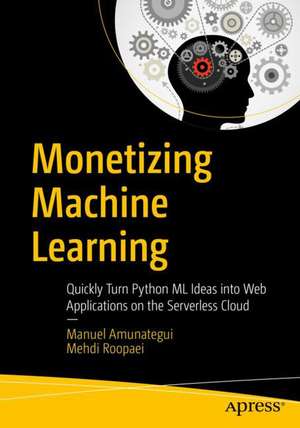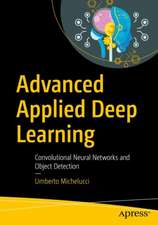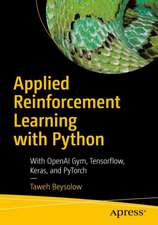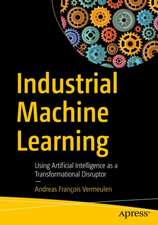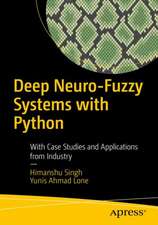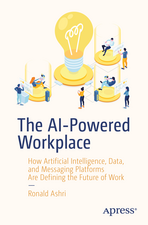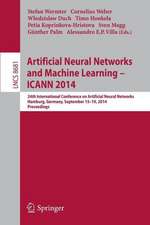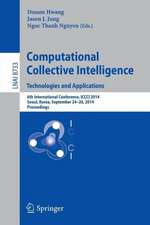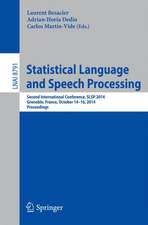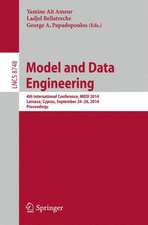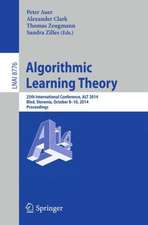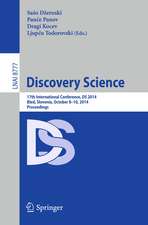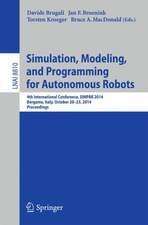Monetizing Machine Learning: Quickly Turn Python ML Ideas into Web Applications on the Serverless Cloud
Autor Manuel Amunategui, Mehdi Roopaeien Limba Engleză Paperback – 13 sep 2018
You will work through a series of common Python data science problems in an increasing order of complexity. The practical projects presented in this book are simple, clear, and can be used as templates to jump-start many other types of projects. You will learn to create a web application around numerical or categorical predictions, understand the analysis of text, create powerful and interactive presentations, serve restricted access to data, and leverage web plugins to accept credit card payments and donations. You will get your projects into the hands of the world in no time.
Each chapter follows three steps: modeling the right way, designing and developing a local web application, and deploying onto a popular and reliable serverless cloud provider. You can easily jump to or skip particular topics in the book. You also will have access to Jupyter notebooks and code repositories for complete versions of the code covered in the book.
What You’ll Learn
- Extend your machine learning models using simple techniques to create compelling and interactive web dashboards
- Leverage the Flask web framework for rapid prototyping of your Python models and ideas
- Create dynamic content powered by regression coefficients, logistic regressions, gradient boosting machines, Bayesian classifications, and more
- Harness the power of TensorFlow by exporting saved models into web applications
- Create rich web dashboards to handle complex real-time user input with JavaScript and Ajax to yield interactive and tailored content
- Create dashboards with paywalls to offer subscription-based access
- Access API data such as Google Maps,OpenWeather, etc.
- Apply different approaches to make sense of text data and return customized intelligence
- Build an intuitive and useful recommendation site to add value to users and entice them to keep coming back
- Utilize the freemium offerings of Google Analytics and analyze the results
- Take your ideas all the way to your customer's plate using the top serverless cloud providers
Those with some programming experience with Python, code editing, and access to an interpreter in working order. The book is geared toward entrepreneurs who want to get their ideas onto the web without breaking the bank, small companies without an IT staff, students wanting exposure and training, and for all data science professionals ready to take things to the next level.
Preț: 385.43 lei
Preț vechi: 481.79 lei
-20% Nou
Puncte Express: 578
Preț estimativ în valută:
73.75€ • 77.21$ • 61.02£
73.75€ • 77.21$ • 61.02£
Carte disponibilă
Livrare economică 15-29 martie
Preluare comenzi: 021 569.72.76
Specificații
ISBN-13: 9781484238721
ISBN-10: 1484238729
Pagini: 500
Ilustrații: XLI, 482 p. 319 illus.
Dimensiuni: 178 x 254 x 33 mm
Greutate: 0.9 kg
Ediția:1st ed.
Editura: Apress
Colecția Apress
Locul publicării:Berkeley, CA, United States
ISBN-10: 1484238729
Pagini: 500
Ilustrații: XLI, 482 p. 319 illus.
Dimensiuni: 178 x 254 x 33 mm
Greutate: 0.9 kg
Ediția:1st ed.
Editura: Apress
Colecția Apress
Locul publicării:Berkeley, CA, United States
Cuprins
Chapter 1 Introduction to Serverless Technologies.- Chapter 2 Client-Side Intelligence using Regression Coefficients on Azure.- Chapter 3 Real-Time Intelligence with Logistic Regression on GCP.- Chapter 4 Pre-Trained Intelligence with Gradient Boosting Machine on AWS.- Chapter 5 Case Study Part 1: Supporting Both Web and Mobile Browsers.- Chapter 6 Displaying Predictions with Google Maps on Azure.- Chapter 7 Forecasting with Naive Bayes and OpenWeather on AWS.- Chapter 8 Interactive Drawing Canvas and Digit Predictions using TensorFlow on GCP.- Chapter 9 Case Study Part 2: Displaying Dynamic Charts.- Chapter 10 Recommending with Singular Value Decomposition on GCP.- Chapter 11 Simplifying Complex Concepts with NLP and Visualization on Azure.- Chapter 12 Case Study Part 3: Enriching Content with Fundamental Financial Information.- Chapter 13 Google Analytics.- Chapter 14 A/B Testing on PythonAnywhere and MySQL.- Chapter 15 From Visitor To Subscriber.- Chapter 16 Case Study Part 4: Building a Subscription Paywall with Memberful.- Chapter 17 Conclusion.-
Notă biografică
Manuel Amunategui has decades of professional experience in programming, data science, and creating end-to-end solutions for customers in various industries. He sees informational and educational gaps in the industry. He has been fortunate to work with software at Microsoft, in finance on Wall Street, in research at one of the largest health systems in the US, and now as VP of Data Science at SpringML, a Google Cloud and Salesforce preferred partner. He understands what it takes to start new careers and new businesses.
Since 2013, he has been advocating for data science through blogs, vlogs, and educational material. He has grown and curated various highly focused and niche social media channels, including a YouTube channel with 60 videos and 350k views and a very popular applied data science blog. His teaching perspective is about welcoming any new comer with a desire to learn, creating material to quickly overcome learning curves, and demonstrating through clear narrative and practical examples that it is never as hard as most people think.Mehdi Roopaei, PhD, is a postdoctoral fellow at Open Cloud Institute of University of Texas at San Antonio, with a research focus on data-driven decision-making systems. He has 12 years of experience in teaching at the university level, more than 980 citations for peer-reviewed publications, and two published books. His focus is on cloud machine learning, data analytics, and the AI-Thinking platform (proposed at HICSS51).
Since 2013, he has been advocating for data science through blogs, vlogs, and educational material. He has grown and curated various highly focused and niche social media channels, including a YouTube channel with 60 videos and 350k views and a very popular applied data science blog. His teaching perspective is about welcoming any new comer with a desire to learn, creating material to quickly overcome learning curves, and demonstrating through clear narrative and practical examples that it is never as hard as most people think.Mehdi Roopaei, PhD, is a postdoctoral fellow at Open Cloud Institute of University of Texas at San Antonio, with a research focus on data-driven decision-making systems. He has 12 years of experience in teaching at the university level, more than 980 citations for peer-reviewed publications, and two published books. His focus is on cloud machine learning, data analytics, and the AI-Thinking platform (proposed at HICSS51).
Textul de pe ultima copertă
Take your Python machine learning ideas and create serverless web applications accessible by anyone with an Internet connection. Some of the most popular serverless cloud providers are covered in this book—Amazon, Microsoft, Google, and PythonAnywhere.
You will work through a series of common Python data science problems in an increasing order of complexity. The practical projects presented in this book are simple, clear, and can be used as templates to jump-start many other types of projects. You will learn to create a web application around numerical or categorical predictions, understand the analysis of text, create powerful and interactive presentations, serve restricted access to data, and leverage web plugins to accept credit card payments and donations. You will get your projects into the hands of the world in no time.
Each chapter follows three steps: modeling the right way, designing and developing a local web application, and deploying onto a popular andreliable serverless cloud provider. You can easily jump to or skip particular topics in the book. You also will have access to Jupyter notebooks and code repositories for complete versions of the code covered in the book.
What You’ll Learn:
You will work through a series of common Python data science problems in an increasing order of complexity. The practical projects presented in this book are simple, clear, and can be used as templates to jump-start many other types of projects. You will learn to create a web application around numerical or categorical predictions, understand the analysis of text, create powerful and interactive presentations, serve restricted access to data, and leverage web plugins to accept credit card payments and donations. You will get your projects into the hands of the world in no time.
Each chapter follows three steps: modeling the right way, designing and developing a local web application, and deploying onto a popular andreliable serverless cloud provider. You can easily jump to or skip particular topics in the book. You also will have access to Jupyter notebooks and code repositories for complete versions of the code covered in the book.
What You’ll Learn:
- Extend your machine learning models using simple techniques to create compelling and interactive web dashboards
- Leverage the Flask web framework for rapid prototyping of your Python models and ideas
- Create dynamic content powered by regression coefficients, logistic regressions, gradient boosting machines, Bayesian classifications, and more
- Harness the power of TensorFlow by exporting saved models into web applications
- Create rich web dashboards to handle complex real-time user input with JavaScript and Ajax to yield interactive and tailored content
- Create dashboards with paywalls to offer subscription-based access
- Access API data such as Google Maps, OpenWeather, etc.
- Apply different approaches to make sense of text data and return customized intelligence
- Build an intuitive and useful recommendation site to add value to users and entice them to keep coming back
- Utilize the freemium offerings of Google Analytics and analyze the results
- Take your ideas all the way to your customer's plate using the top serverless cloud providers
Caracteristici
Ties together three different knowledge sets—machine learning/statistics, prototyping via web applications, and working with cloud providers Provides a simple, cloud-brand and technology-agnostic guide on extending Python modeling work to the world stage as quickly as possible and with little compromise Discusses the systematic art of rapid prototyping of statistics and modeling work onto the web
